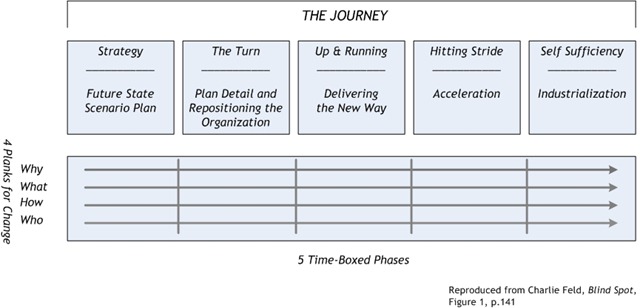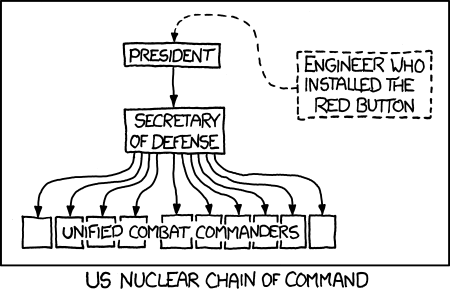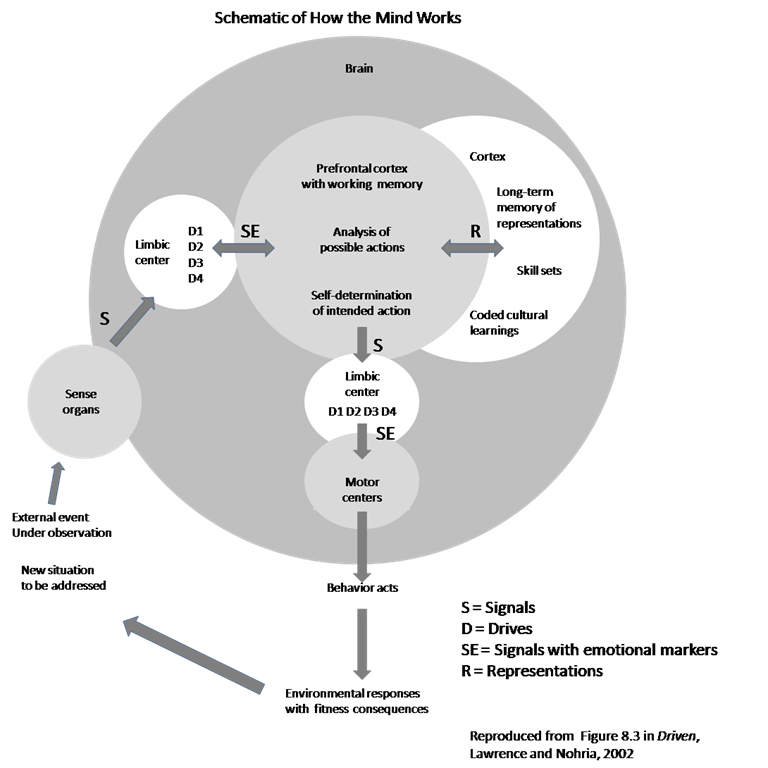 Blind Spot: A Leader’s Guide To IT-Enabled Business Transformation, Feld, Charlie
Blind Spot: A Leader’s Guide To IT-Enabled Business Transformation, Feld, Charlie
In the 1980s a handful of organizations established that the right combination of strategic and technology insights and execution could lead to results worth the attention of CEOs and Boards of Directors. One of those successes was a major transformation in the sales and distribution systems of Frito-Lay during their rise to prominence as a national player in the snack business. Frito’s CIO, Charlie Feld, was at the helm of this effort and was one of the individuals who defined the modern CIO role in the process. After Frito, Feld created a specialty consulting firm that spearheaded similar transformation in a variety of other firms and industries. Blind Spot captures Feld’s reflections on the challenges of using IT as a transformational tool and how to manage them.
The heart of Feld’s argument is this:
Most senior leaders have learned enough about the workings of their businesses to feel comfortable engaging in a new-product dialogue or a complex financial debate or a major litigation. But few have adequate background to understand and lead wide-scale changes that are technology enabled….To most executives, IT is a blind spot–a discipline that is confusing and hard to understand.
My belief is that information technology should not be viewed as a complex functional area. It is an integrating discipline that enables other functions to operate as a seamless, well-run business. Instead of some mysterious black box, IT can be less complex and easier to understand than marketing, operations, finance, sales, and other traditional operating disciplines. This is because it is fundamentally all about the way a business should operate, manifested in information access, workflows, networks, and business rules. And instead of a blind spot, information technology can and should be a highly visible and well-understood part of every business leader’s knowledge base,
(Feld, Blind Spot, p. xvii-xviii)
To tackle that problem, Feld shares a framework he has developed in the course of his efforts to drive IT transformation at Frito-Lay and elsewhere. Like any good framework, it’s simple enough to sketch on a whiteboard or on the back of a placemat, yet it can anchor and center an extended conversation about change. Contrast Feld’s framework with the Byzantine complexity of many systems development methodologies.

The "Journey" that Feld describes is straightforward. The most interesting aspect is his emphasis on time-boxing the phases in order to establish and maintain momentum. At the same time, he recognizes the importance of taking enough time at the outset, in the Strategy and Turn phases, to get the overall direction and plan directionally correct. His experience calls for these first two phases to take about 90-days each. Subsequent phases are designed to deliver visible results every 6 to 9 months.
The second dimension of Feld’s framework, what he labels as "4 Planks for Change," is where things get much more interesting. This is where Feld devotes the bulk of his attention and he uses his experiences from Frito-Lay, Burlington Northern Santa Fe, Delta Airlines, Home Depot, and Southwest Air to illustrate his approach. These planks address four core questions about a proposed business transformation effort:
- Why do anything at all?
- What will we do?
- How will we do it?
- Who will lead and manage the change?
The value of these questions is that they are well suited to the debate and discussion that you want to be having in the C-suites and Board meetings about business transformation. They also help redirect the technically enamored from bright shiny objects to business value.
When I try to wrap my head around frameworks or approaches, I always look for is the "perform magic" step. Somewhere among the boxes and flows, there will be one spot where the essential design decision gets made or the case gets cracked or the strategy reveals itself. In Feld’s framework, i believe this essential creative step occurs in working out the What of the transformation Strategy.
Frito-Lay, for example, to maintain its growth, needed to give its route drivers local flexibility over product mix while maintaining close central control over manufacturing and quality. Their solution was to equip drivers with early hand-held point-of-sale terminals that let the drivers manage the diverse range of Frito-Lay products and accurately report sales activities back to corporate on a daily basis. In the case of Burlington Northern Santa Fe, the challenge was to synchronize the electronic picture of where all of its rolling stock was with the physical reality in near real time. In these, and other, cases Feld deftly sketches the essential strategic What.
There is a common thread in Feld’s strategic analyses. The strategic choice in large organizations is whether to focus on operational efficiencies or customer intimacy. More often than not, this leads to efforts that bounce back and forth between bouts of centralization and decentralization. The strategic promise of IT is to change the answer in these debates from "either/or" to "both" by making a hybrid business feasible. Here’s how Feld describes it:
It is not about centralization versus decentralization–both have their virtues and liabilities. It is about common versus unique processes, standard versus disjointed information, and leveraged versus fragmented IT platforms and networks. If you are common, standard, and leveraged in your systems, data, and processes, you can continuously flex between centralized and decentralized where it is appropriate, like Wal-Mart. However, if those things are unique, disjointed, and fragmented, you are locked into those structures and change is expensive and slow, like Home Depot’s was….It may seem counterintuitive, but the more standardized your systems and processes are, the more flexible you can be.
(Feld, Blind Spot, pps. 144-45)
Feld’s third question is "How will we do it?" Because his primary audience is business leaders, he rightly keeps his focus at an executive level emphasizing the importance of sound architecture, concrete deliverables, and effective program management. These tend to be topics that cause most executives’ eyes to glaze over. In general, Feld makes the case for the relevance of this question as a co-equal part of the transformation process. He avoids the temptation to get caught up in either technical or process minutia. This may annoy some readers, but is the right decision for his target audience.
Feld closes with a look at the critical importance of leadership and management. He strongly favors an IT organization built to reflect stable, core, business processes rather than attempting to mirror more dynamic organizational structures. he sketches a basic IT organization that calls for 50-100 competent leaders. Successful business transformations like those he’s been describing call for a corresponding leadership cadre from the business side of the organization. This is a richer, more pragmatic, view of the leadership demands of this kind of technology enabled transformation than you will find elsewhere.
Blind Spot is a useful synthesis. It’s rooted in the ground truth of its case studies as told by someone who was there, start to finish. From that ground truth, Feld constructs a framework that can shape and guide comparable efforts without forcing them into too narrow a path. It’s most useful for those readers who can bring their own experience base to the task of understanding the framework and making it their own. Given the ongoing role of IT as a potential strategic tool, this is a set of ideas that belong in your toolkit.





![Reblog this post [with Zemanta]](http://img.zemanta.com/reblog_e.png?x-id=b629bdcf-db69-46ff-8132-527da6c018a1)


![Reblog this post [with Zemanta]](http://img.zemanta.com/reblog_e.png?x-id=ce47911a-c0de-47c6-af17-8325c943a615)
